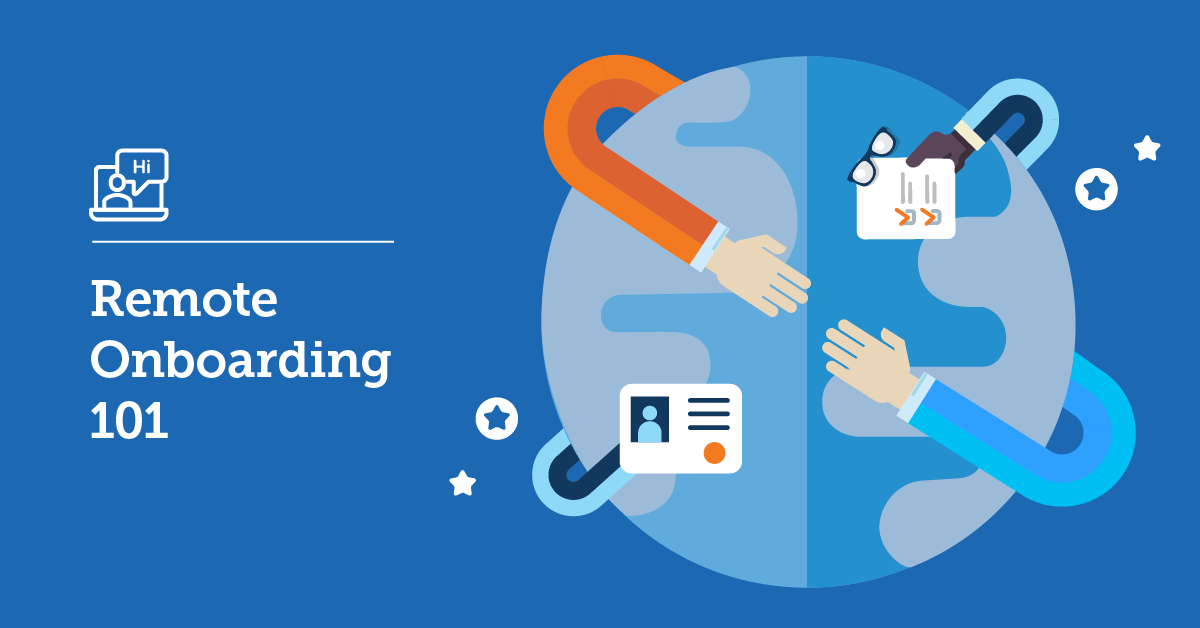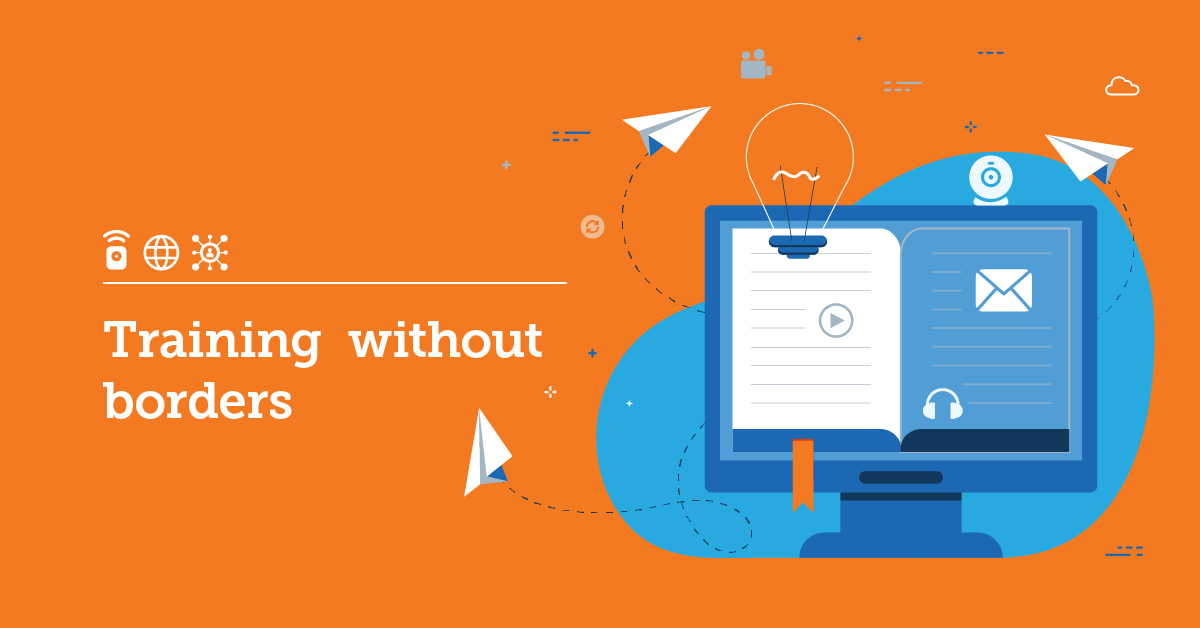As remote work is gaining more and more popularity, employers are updating their tools and processes to interview candidates even from afar.
In addition to that, they’re also looking for productivity hacks to help their teams work from home effectively. In-between, though, they may be missing one crucial step: onboarding remote employees.
Considering that the first days at work play a big part in how new hires feel about a company and how long they’re willing to stay, the way you onboard remote employees can make a huge difference.
Especially given the fact that remote work is not just a trend that will soon fade away, with over 43% of American employees reporting that they worked at least some of the time remotely before the coronavirus outbreak.
But the recent pandemic and social distancing guidelines forced many companies and employees to transition to remote work fully. And it looks like this is not a temporary measure. In fact, 57% of small business owners say that they’ll maintain work from home options for their employees in the long-run, even post-COVID-19.
Luckily, this aligns with how employees feel about remote work with 6 out of 10 remote workers saying they’d like their job less if they had to go back to the office.
What might be a necessity now could become a new norm in the future. Because both employees and employers have experienced the benefits that remote work comes with. Those benefits include lower overheads, increased productivity, and flexibility to balance personal and professional interests.
However, remote work does come with challenges, and they need to be tackled off the bat when onboarding remote employees.
The challenges of onboarding a remote workforce
Remote work comes with a bunch of benefits, but there still is some unexplored territory. We may be familiar with how to welcome a new hire in-person, but onboarding and training remote employees require a bit of a different approach.
From the organization’s point of view, the main challenges with remote onboarding include:
- Introducing new hires to existing team members
- Setting up the necessary equipment remotely
- Keeping communication open and timely
- Managing and signing digital HR paperwork (e.g., employment contracts, benefits)
- Communicating priorities, as well as business and individual objectives
- Explaining company policies and procedures
The main challenges that new remote employees might face are:
- A sense of isolation
- Getting to know their new team members (3 out of 4 tools they use are communication apps)
- Not being able to get on-the-spot answers
Onboarding is often seen as another box to tick.
But when it comes specifically to onboarding remote employees, it makes sense to design your virtual welcome more carefully. This lack of immediate, in-person contact doesn’t always let you understand whether your new remote employee needs assistance or has everything in place.
Besides, inadequate training combined with physical distance makes it harder for employees to engage with your company.
Onboard your remote employees easily with TalentLMS
The training platform that users consistently rank #1.
Easy to set up, easy to use, easy to customize.
Benefits of onboarding remote employees
Not sure what you stand to gain by investing more in onboarding remote employees? First off, we need to understand the value of employee onboarding, in general.
Lazlo Bock, VP of People Operations at Google (yes, Google!), said: “At Google, we front-load our people investment. This means the majority of our time and money spent on people is invested in attracting, assessing, and cultivating new hires.”
Onboarding is exactly the cultivating of new hires that Lazlo speaks about. It’s the activity that takes an employee from “new hire” to “part of the team.” Done well, onboarding will also supercharge new hire productivity by boosting their motivation and job satisfaction from the get-go.
Now if we’re talking specifically about how to onboard remote employees, a successful and carefully-planned process will help new hires:
- Learn the company’s management style
- Understand their job responsibilities and “get to work” sooner
- Understand the channels for feedback, questions, and work-related concerns
- Adjust to the company’s corporate culture
- Understand what is expected of them in terms of schedule, communication, and day-to-day telecommuting logistics

Onboarding remote employees: Best practices
Many employee onboarding practices can be applied almost directly to remote employees, but some become more important than others when you’re working with a remote team.
As Joanna Zambas from CareerAddict explains:
“Onboarding a remote employee will follow a slightly different process; to make sure your new hire feels like part of the team, involve them in as many virtual meetings as possible to ensure there’s a good level of communication. In addition, use interactive training courses and seminars to get your employees up-to-speed and familiar with company processes.”
Here are three tips for onboarding remote employees that will help you get the most out of your remote team members from day one.
Here are three tips for onboarding remote employees that will help you get the most out of your remote team members from day one.
1. Have virtual introductions for your new hires and their team
Feelings of isolation can easily threaten a remote employee’s sense of belonging and productivity. And unless you have physical offices where they can spend their first days, team lunch breaks and after-work welcome drinks become nonexistent.
To onboard remote employees and make them feel welcome from day one, schedule brief video calls both with the entire team and then individually with coworkers they’ll mostly interact with. These introductions are essential to communicate team structure, create a sense of shared goals, and build enthusiasm.
Once remote employees have met their team, make sure to introduce them to the rest of the company. You can simply send a company-wide “new hire” email or spread the news with a welcome message on the messaging app you’re using (e.g., Slack).
When onboarding remote employees, note that they may get overwhelmed with all the new names they’re going to hear, particularly considering that they can’t connect them to faces yet.
Give them useful resources they can revisit to refresh their memory about who is who. For example, you can provide new remote hires with a user-friendly document (with photos!) that lays out the organizational structure and reporting lines. You can even include contact details, like Skype addresses, for each person in the organizational chart.
Whatever resource you decide to go with, you need to update it regularly. If you have several remote team members, it might be worth investing in an HR tool, like BambooHR, so you can keep all information in one place.
2. Set up remote communication channels
It’s hardly surprising that remote employees struggle with clogged communication channels — healthy communication is hard to achieve even when people work at the office!
Luckily, technology makes remote work viable. You can use a variety of platforms, including both synchronous and asynchronous communication tools. When onboarding remote employees, make sure they know how and when to use each one of them.
If your new remote employees are not tech-savvy or familiar with the specific tools you’re using, schedule some training sessions during their first weeks.
Start with the ones used more broadly by the entire company (e.g., a video conference platform or a messaging app) and the ones they’ll mostly need for their job (e.g., a project management platform or a design collaboration tool).
It’s also important to explain your company’s communication etiquette, like the best channel to ask a question or when it’s better to send an email instead of an instant message.
Here’s an example: Kate, a development manager, is concerned about a looming deadline and doesn’t want to risk waiting for John, her remote software developer, to see her email. She sends him a few messages on WhatsApp. John responds immediately because he understands the urgency, but doesn’t appreciate the intrusion into his “personal communications.”
Because he responds promptly, Kate keeps using WhatsApp to check in on other projects. Soon, their messages become hard to track, instructions start to look less professional, and their conversations are challenging to share with other team members who need to be brought into tasks.
To avoid this kind of ineffective communication habit, use some time as you onboard remote employees to establish clear and upfront expectations and standards for communication via:
- Instant Messaging (e.g., Slack)
- Scheduled video calls (e.g., GoToMeeting video calls)
- One-on-one video calls
- Phone calls to private mobile phones
- Project management tools (e.g., Trello, Asana, etc.)
Onboarding software that you and your people will instinctively know how to use.
Go with TalentLMS, the platform that users consistently rank #1.
Easy to set up, easy to use, easy to customize.
3. Set clear onboarding goals
Usually, your goal when you onboard a new hire is to give them a warm welcome and set them up for success. The only difference when onboarding remote employees is that you might have to create a more detailed list of what you want to achieve and how you’re going to do it so that nothing falls between the cracks.
Keep in mind that not being in the same room (often not being in the same time zone, as well), might make new hires feel uncomfortable asking questions via emails or instant messages.
Try to be proactive and share an onboarding plan in advance, so they know what to expect.
Consider creating a remote onboarding checklist where you can break down tasks and goals for your new hires by day or week. For example:
By the end of day 1, you’ll have:
-
- Completed all necessary HR paperwork
- Met with your direct manager
- Set up your email and Slack accounts
By the end of week 1, you’ll have:
-
- Met with your team, through 1:1s
- Familiarize yourself with X, Y, Z tools
- Watched a product demo
By the end of week 4, you’ll have:
-
- Met with the heads of A, B, and C departments
- Taken a security training
- Completed your first project
You can write down remote onboarding activities and tasks so you can prepare everything before a new hire’s first day at work.
If you often hire remote employees, use a remote onboarding checklist template like this:
Before a new hire starts |
Once a new hire starts |
|
Send necessary equipment (e.g., computer, mouse, etc.) |
Schedule training sessions (both role-specific and company-specific) |
|
Send a welcome swag (e.g., a notebook or a |
Schedule “get to know the team” video |
|
Prepare and share via email HR paperwork |
Share useful resources (e.g., company policies, |
|
Set up accounts for the main tools (e.g., company email) |
Organize an HR-related go-through (including company structure, values and “who is who”) |
|
Prepare necessary paperwork for additional benefits (e.g., gift cards, training, etc.) |
Book a check-in meeting to answer any additional questions and get feedback |
Once the manager and the new hire have set specific goals for the onboarding process, they should discuss a development plan.
This can address more long-term priorities about the employee’s performance and interaction with the rest of the organization. For example, this plan may look more closely at how a remote employee can engage in the company culture and solidify their place in the team.
Onboarding remote employees: A worthwhile investment
When you take your time with remote onboarding and make sure that expectations, communication channels, and the organization’s structure are clear from the start, new remote hires will feel confident in their ability to meet their new responsibilities.
And happy, cohesive, and well-equipped remote teams mean better business value.
| Tags: Remote Employees



